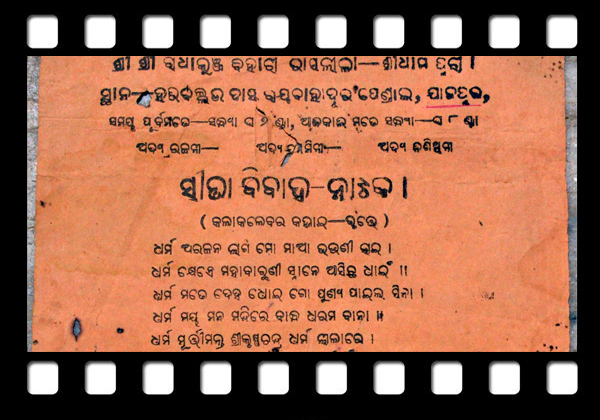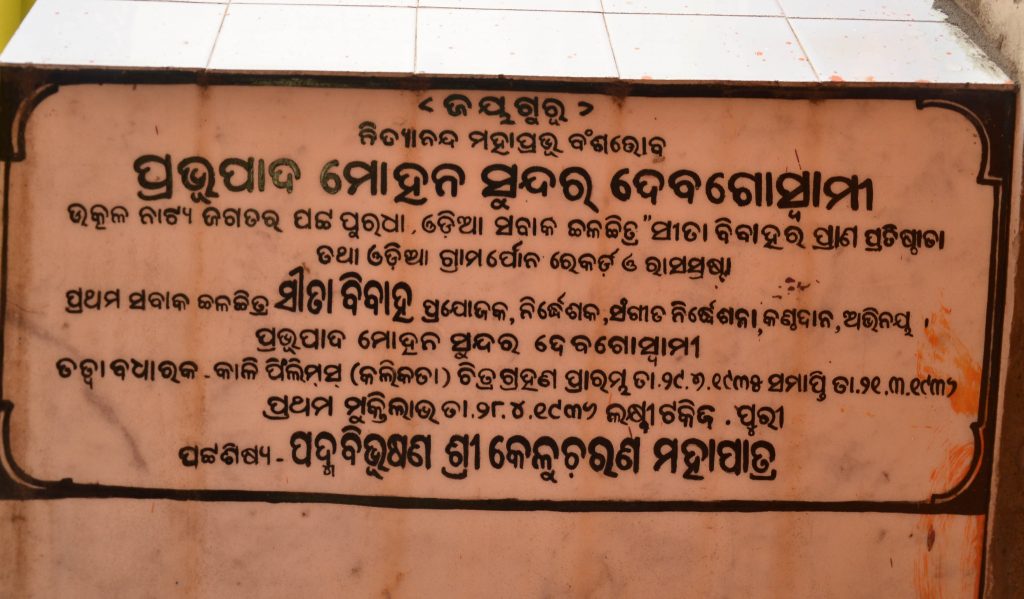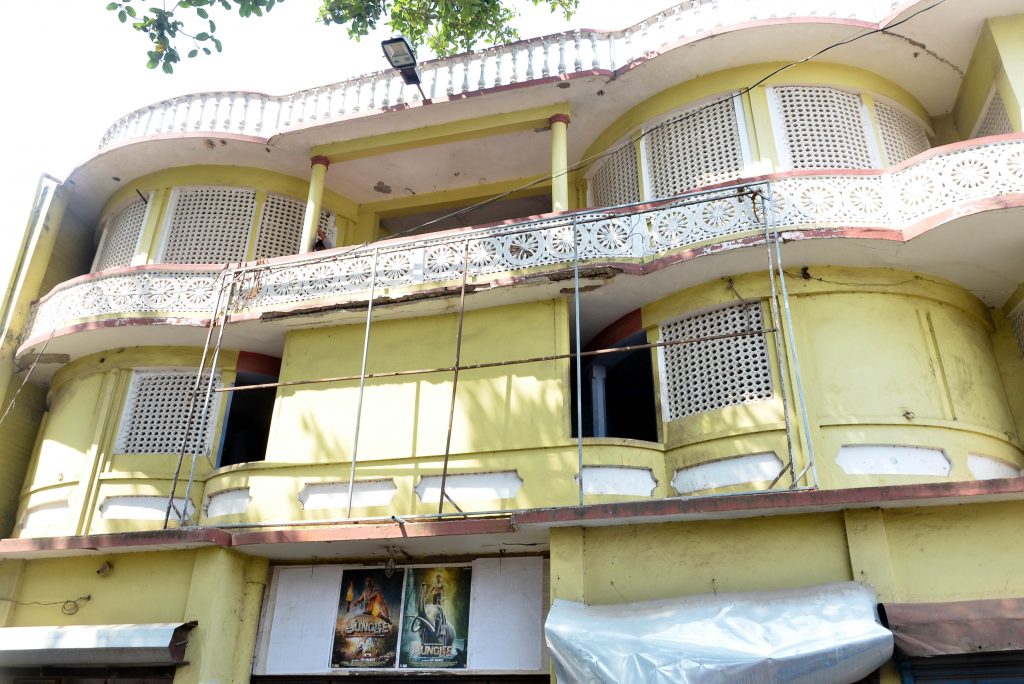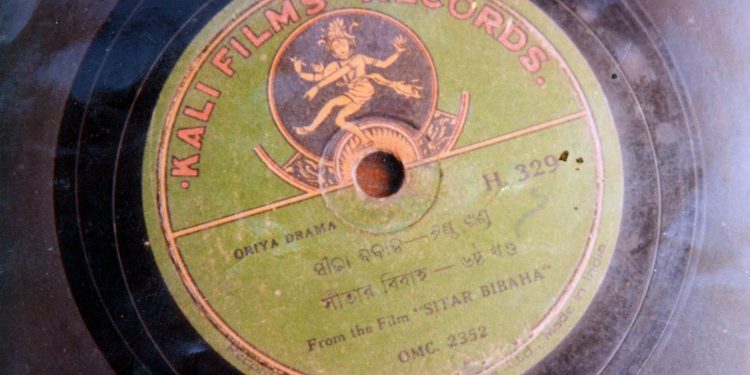Everything in life has a beginning. Even the cinema that we see today was invented by the Lumiere brothers and introduced to our country by Dada Saheb Phalke. Just as Phalke is recognised as the Father of Indian cinema after directing the first Indian movie Raja Harishchandra, Mohan Sundar Deb Goswami is rightfully called the Father of Odia cinema for helming Sita Bibaha (Sita’s Marriage), the first Odia talkie which released in 1936, dubbed as the year of Odia resurgence. Politically, it marked the formation of the state as a separate province on the basis of language, while on the cultural front, the first print of Sita Bibaha was timed to hit the screens on the birth anniversary of Utkal Gourav Madhusudan Das.
The seed planted quietly by Mohan Sundar laid the foundation for all future Odia filmmakers, says Surya Deo, an archivist who is better known as an encyclopedia on Odia cinema. He has been on a mission to document and highlight the history of 83 years of Odia cinema.
Daredevil approach
Mohan Sundar, a resident of Puri, was a pioneer in Rasaleela, which was a theatrical portrayal of the Radha-Krishna romance. His famed troupe commanded respect from all sections of society. Mohan Sundar used to present dramas in Odia and Bengali languages. During a rehearsal session in 1929, Shirish Chandra Ghosh, director of the play Debaladebi, tried to persuade Goswami to try filmmaking. But it did not work out at that time, says Surya.

In 1934, the Radhakrishna Chamelia touring company that travelled to various places to show films had set up its tent in Mochi Sahi, a colony of shoemakers in Puri. But Goswami couldn’t go there to watch the film as it would have adversely affected his social standing. However, he got the opportunity when the company shifted temporarily to Annapurna Theatre premises after their tent was blown away by a storm. After watching the movie, Mohan Sundar began to think of making a foray into the world of cinema.
At that time, his drama troupe received regular financial aid from the Kolkata-based Chandi Charan Saha who owned the Hindustan Gramophone Record Company. Saha, who considered Mohan Sundar as his spiritual guru, agreed to pump money into the film, so did another follower Priyanath Ganguli, who was the proprietor of Kali Films.
Not an easy route
Priyanath supported Mohan Sundar in making the first Odia film but the condition was that he would pay Rs 4,500 only and the rest of the finance would be arranged by Mohan Sundar.
Meanwhile, Saha, who had earlier visited Puri and seen Mohan Sundar’s performance in playwright Kamapala Mishra’s Sita Bibaha for his Rasa troupe in 1899, suggested that this drama should be made into the first film in Odia.
The drama was written in the Amritakshari lyrical ballet format. Mohan Sundar simplified it to fit the film format. Before the shooting began, a pact was inked between Kali Films and Mohan Sundar. The essence of the four-page contract with 19 clauses was: “This contract, dated July 29, 1935 is between two parties. The first party is Kali Films, Calcutta and the second party is Mohan Sundar Deb Goswami (contractor), Puri. The first party is staging plays to be filmed into Odia talkies and for this wishes the contractor to arrange for talented artistes. The contract between the parties is that the company will provide Rs 4,500 to the contractor who will complete Odia talkie film Sita Bibaha.”
The contract also mentions that the copyright for the film would remain with Kali Films.
Cast and crew
Most of the artistes from Mohan Sundar’s Rasa troupe were roped in to act in the film. Mohan Sundar played the role of Vishwamitra, Ram was played by Makhanlal Bannerjee (an advocate in Cuttack), Sita was played by Prabhabati Dasi from Cuttack (since female artistes from Puri were unwilling), Adwaita Charan Mohanty played Laxman, Nrusingha Nanda Sharma donned the role of fisherman and Kumud took on the role of fisherwoman. Mahendra Bose played Janaka, Krishnamohan Singh played Dashrath and Ganeswar Rath and Radharani were seen in comic roles. Other artistes in the film included Satyabadi Tripathy, Nilakantha Mishra, Kashinath Rath, Haribandhu Mohanty, Lala Ramachandra Ray, Lala Baidyanath Ray, Chandraprabha, Laxmipriya Bose, Nisamani Parbati, and Krushnamani. The entire film was shot in Kolkata after several rehearsals in Puri. Mohan Sundar choreographed all the dances for the film. The artistes had to sing too for which they were trained by Srihari Charan Mohanty.

Shooting began September 19, 1935. Most of the shoots were done indoor in the Kali Film Studio while some sequences were shot near river Ganges. The cameraman for the film was Nana Mohan Sanyal.
Pioneering attempt
While other regional film industries had started with silent films, subsequently moving to talkies, Mohan Sundar stepped into the world of cinema with a talkie. In fact, since the technology of sound dubbing in studios was not well developed at that time, the dialogues as well as music and songs of the film were recorded live.
The shooting went on for two months but during post-production, it is said, some conflicts about rights arose between Priyanath and Mohan Sundar. Though Mohan Sundar’s name is listed in the credits for direction, screenplay and production, the Bengal Board of Film Certification mentioned Kali Films as the producer for the film.
Bouquets and brickbats
Sita Bibaha changed the definition of entertainment in Odisha. As per the documents found with Mohan Sundar’s descendants, the film was first released in Kolkata March 25, 1936. However, April 28, 1936 is celebrated as the red-letter day for Odia cinema when the first Odia film was released in the newly formed state that was just days old.
The film first released at Laxmi Talkies in Puri and then in the first cinema hall of the state, Sri Sitaram Vilas Talkies (SSVT) in Berhampur. It was also screened in Cuttack at Cinema Palace and Akme Theatre as well as Ramai Talkies in Bolangir and Samlai Talkies in Sambalpur. The Radhakishen Chamelia touring company screened it throughout the state.
Though Mohan Sundar’s effort was applauded, Sita Bibaha received a fair share of brickbats. Mohan Sundar was criticised for his underperformance as Viswamitra. It was also said that the actress who played the role of Sita’s ‘sakhi’ could have played the main character. However, the roles of Makhanlal Banerjee as Lord Ram and Narasingha Nandasharma as the boatman came up for appreciation. There were 14 songs in the film and the backdrops of the songs and dances were impeccable, according to a review.
Some of the popular songs from Sita Bibaha were “Debanka Tarane, Danuja Marane,” “Apurba Kumar Tripura Sundari,” “Kali Dekhithili Madhura Chaliki” and “Kahinki Go Priya Sakhi.”
Descendant speaks
“Legends are born, not made – an adage that aptly fits my grandfather,” says Rasikraj Dev Goswami, grandson of Mohan Sundar.
“At a time when the state did not have basic infra for filmmaking, he dared to make a film and that too on the epic Ramayana. Though Sita Bibaha laid the foundation of Odia cinema, he had to mortgage his properties and take loans to make the film. He spent Rs 29,781 and 10 Ana on the project and managed to release the film on the birth anniversary of Utkal Gourav Madhusudan Das. My mother said he found it difficult to get an actress to play Sita’s character as acting was looked down upon in society at that time.”

According to the vouchers signed by the artists, which is still available with his kin, Makhanlal (Ram) had received Rs 120 while Adwaita Charan Mohanty (Laxman) was paid just Rs 35 as conveyance fee. And incidentally, the actress Miss Prabhabati (Sita) received the highest amount among the lot, Rs 150. The film ran for 54 days in Puri.
Rasikraj says, “People from far-flung corners of the state visited the Holy City Puri, a day before watching the movie. They used to carry their luggage with them while coming to Puri. When the song “Debanka Tarane, Danuja Marane” in praise of Lord Ram came on screen, women used to throw flowers and bow their heads. Besides, all of them would stand up and ululate to show their devotion.
“My grandfather was blessed with a melodious voice. Besides, he played 27 musical instruments like harmonium, table, mridanga, jodi nagra, sitar, and flute. He was a diehard fan of Charlie Chaplin and he came up with the idea of making a film after watching Chaplin movies. After his marriage, he formed a Rasadal named Sree Radha Kunjabehari Rasadala. He had written more than 25 dance dramas. Many big personalities like Kabichandra Kalicharan Pattnaik, Babaji Baishnab Charan Das, famous patachitra artist Jagannath Moha Patra learnt the art of abhinaya, percussion playing, singing and stagecraft from Mohan. He breathed his last January 11, 1948.”
Rasikraj laments that the state government has done precious little to commemorate Mohan Sundar’s work. “Though my grandfather laid the foundation of Odia cinema, the government did little except instituting an award in his name. Had he taken birth in Kolkata, things would have been different, for sure. After the release of Sita Bibaha, no film was released in Odisha for 12 years. Lalita was released 12 years later. The sad part is that the print of Sita Bibaha was gutted in Kali Studio when it was sent for revision. My grandfather took so much trouble to make the film. Unfortunately, not a single print is available now.”
Krishna Chandra Pandey, present owner of Puri-based Lakhmi Talkies, says, “My grandfather Fakir Charan was looking after Lakhmi Talkies when Sita Bibaha was first screened. Later, the movie was screened as a ‘touring picture’. My father used to mention that the screening charge of Rs 175 per week was borne by Mohan Sundar.”
Groundbreaking event
While Sita Bibaha will remain a milestone in the history of cinema, most of us will never get a chance to watch the landmark film. But it will always remain an inspiring legend for Odia filmmakers and viewers.
Fact sheet
Title of the film: Sita Bibaha (Sita’s Marriage)
Release date: April 28, 1936
Theatre: Laxmi Talkies, Puri
Production house: Kali Films (Priyanath Ganguli), Kolkata
Producer/Director: Mohan Sundar Deb Goswami
Story: Kamapala Mishra
Cameraman: Nani Sanyal
Shooting duration: Two months
Cost of production: Nearly Rs 30,000
BIJAY MANDAL, OP, Inputs from RASHMIREKHA DAS,OP







































